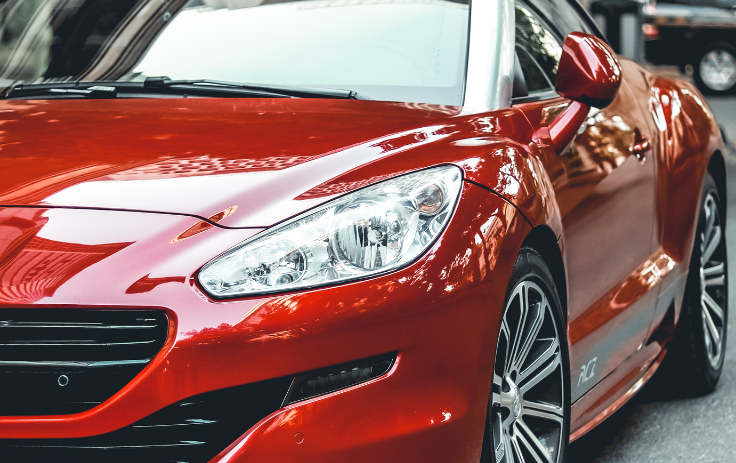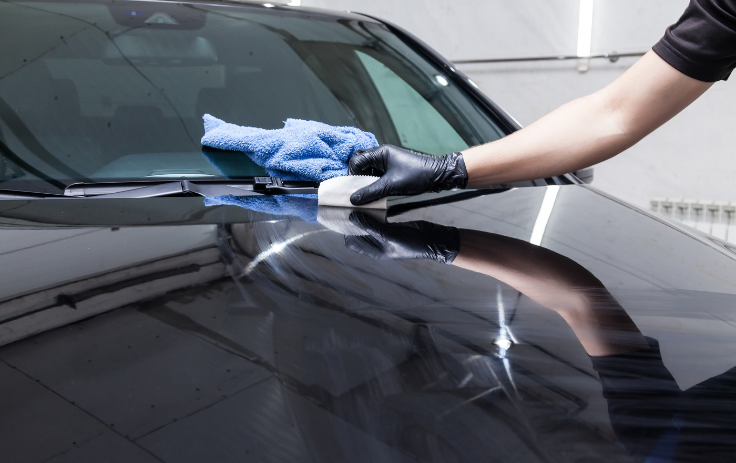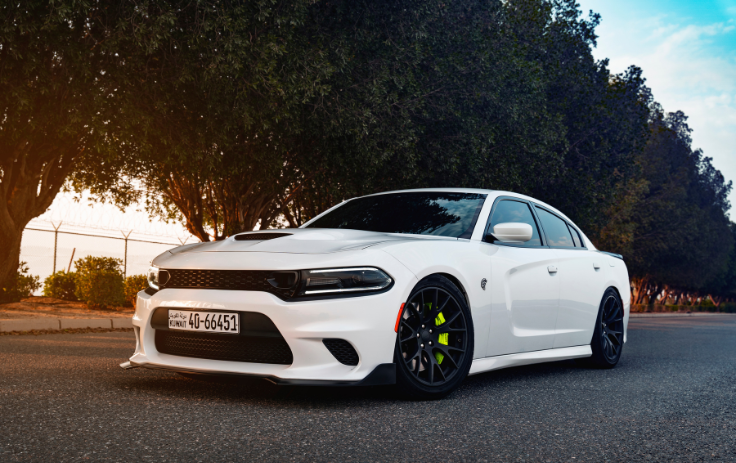Keeping your car looking clean isn’t just about vanity—it’s about protection. Dirt, salt, sun, and even water can wear down your paint over time. You might wash and wax it often, but wax fades fast, leaving your car vulnerable again just weeks later.
Ceramic coating promises a more durable fix. It’s not just for show; it’s designed to protect your vehicle long-term. But what does ceramic coating do, really—and is it worth it?
Let’s break it down in this guide.
What Does Ceramic Coating Actually Do for Cars?
Ceramic coating is a liquid polymer, typically made with silicon dioxide (SiO₂), that chemically bonds to your car’s factory paint. Once cured, it forms a semi-permanent protective layer over the clear coat. Unlike wax, it doesn’t just sit on top—it becomes part of the surface.

Here’s what that layer does:
- Repels water and dirt through hydrophobic properties
- Shields against UV rays, which helps prevent fading and oxidation (EPA)
- Reduces chemical staining from bird droppings, bug guts, and tree sap
- Adds gloss for a shinier, cleaner look between washes
If you’re wondering what does ceramic coating do for cars, this is it—it creates a durable barrier that helps your paint stay cleaner, longer, and with less effort.
How Does Ceramic Coating Work?
Ceramic coatings use nano-sized particles that fill in the microscopic pores in your car’s paint. When applied properly, the coating cures and hardens, creating a slick, invisible layer.
This nanotechnology results in:
- Long-lasting durability (often several years)
- Hydrophobic behavior, where water beads and rolls off easily
- Resistance to minor surface damage like light swirls and etching (NIST on nanotechnology)
It’s important to note that while ceramic coatings provide surface hardness, they don’t make your car scratch-proof. So if you’re asking, “will ceramic coating hide scratches?”—the answer is no. It can help reduce minor marks but won’t cover existing damage.
Where Is Ceramic Coating Used?
Ceramic coating is most commonly applied to:
- Automotive exteriors (paint, wheels, glass)
- Motorcycles and boats
- Off-road vehicles and luxury cars
- Commercial fleets and rideshare vehicles
Professional application is popular, but many people search for ceramic coating nearby for local mobile detailing services that offer the same benefits.
How Much Does Ceramic Coating Cost?

Costs can vary widely depending on the service level, vehicle size, and brand of coating. Here’s a general range:
- DIY kits: $50–$150 (limited durability, often 6–12 months)
- Professional application: $500–$2,000+
For high-end protection like a 1 year ceramic coating, expect to pay more for prep work and expert installation. Prices also rise with longer warranties and additional layers.
What Are the Benefits of Ceramic Coating?
If you’re on the fence, here’s a quick breakdown of the real-world gains:
- Less frequent washing: Dirt and mud slide off more easily
- UV protection: Yes, ceramic coating does protect against UV, reducing the chance of paint fading (EPA)
- Chemical resistance: Reduces the chance of stains sticking
- Paint longevity: Keeps paint looking newer for longer
- Improved resale value: Protected vehicles tend to hold more value
Ceramic Coating vs PPF: What’s the Difference?
While ceramic coating is a liquid that bonds to paint, Paint Protection Film (PPF) is a physical layer applied over your car’s surface.
Key differences:
- PPF is thicker and can absorb stone chips and deeper scratches
- Ceramic coating enhances gloss and helps with cleaning, but doesn’t self-heal like some PPF
- PPF costs more, especially for full-body wraps
- Ceramic is better for ease of maintenance, not impact resistance (GSA Fleet Guide)
Many car owners combine both for full coverage—PPF on high-impact areas (like bumpers and hoods), and ceramic coating everywhere else.
What To Do To Maintain Ceramic Coating?
To keep your coating performing well:
- Use pH-neutral shampoos during washes
- Dry with microfiber towels to avoid swirls
- Wash regularly, even though your car may look clean
- Avoid automatic car washes, which can damage the coating
Want to know how long ceramic coating lasts? With proper care, professional coatings can last anywhere from 2 to 5 years, though cheaper versions may fade much faster.
What To Avoid After Ceramic Coating?

Right after application:
- Don’t wash your car for at least 7 days
- Avoid parking under trees or near construction zones
- Don’t use abrasive tools or harsh chemicals
Skipping these precautions during the curing process can weaken the bond and reduce durability.
Disadvantages of Ceramic Coating: What You Should Know
While ceramic coating has clear benefits, there are trade-offs:
- Not scratch-proof: It resists minor abrasions but won’t prevent dents or deep scratches
- Can be expensive: Especially if applied by professionals
- Requires prep work: Paint correction may be needed first
- Needs upkeep: Still requires washing and maintenance, just less often (IDA – International Detailing Association)
So, while ceramic coating offers a lot, it’s not a one-and-done miracle.
Is Ceramic Coating Worth It for Car Owners?
If you care about your vehicle’s appearance and want to protect your paint with less effort, ceramic coating is a smart option. It reduces maintenance, offers strong environmental protection, and keeps your car looking sharp longer than wax ever could.
Just remember: it’s not bulletproof, and you’ll still need to care for your vehicle. But for most drivers, especially those who park outdoors or drive daily, ceramic coating offers great long-term value.
Want Your Car to Stay Looking New Without the Extra Work?
If you’re searching for ceramic coating near me, you’re probably tired of waxing, fading paint, and stubborn grime. A true ceramic coating gives your car the lasting protection it needs—without the hassle.
Call now or book online to get expert ceramic coating that stands up to the sun, road salt, and daily wear. Less maintenance, more time enjoying your ride.

